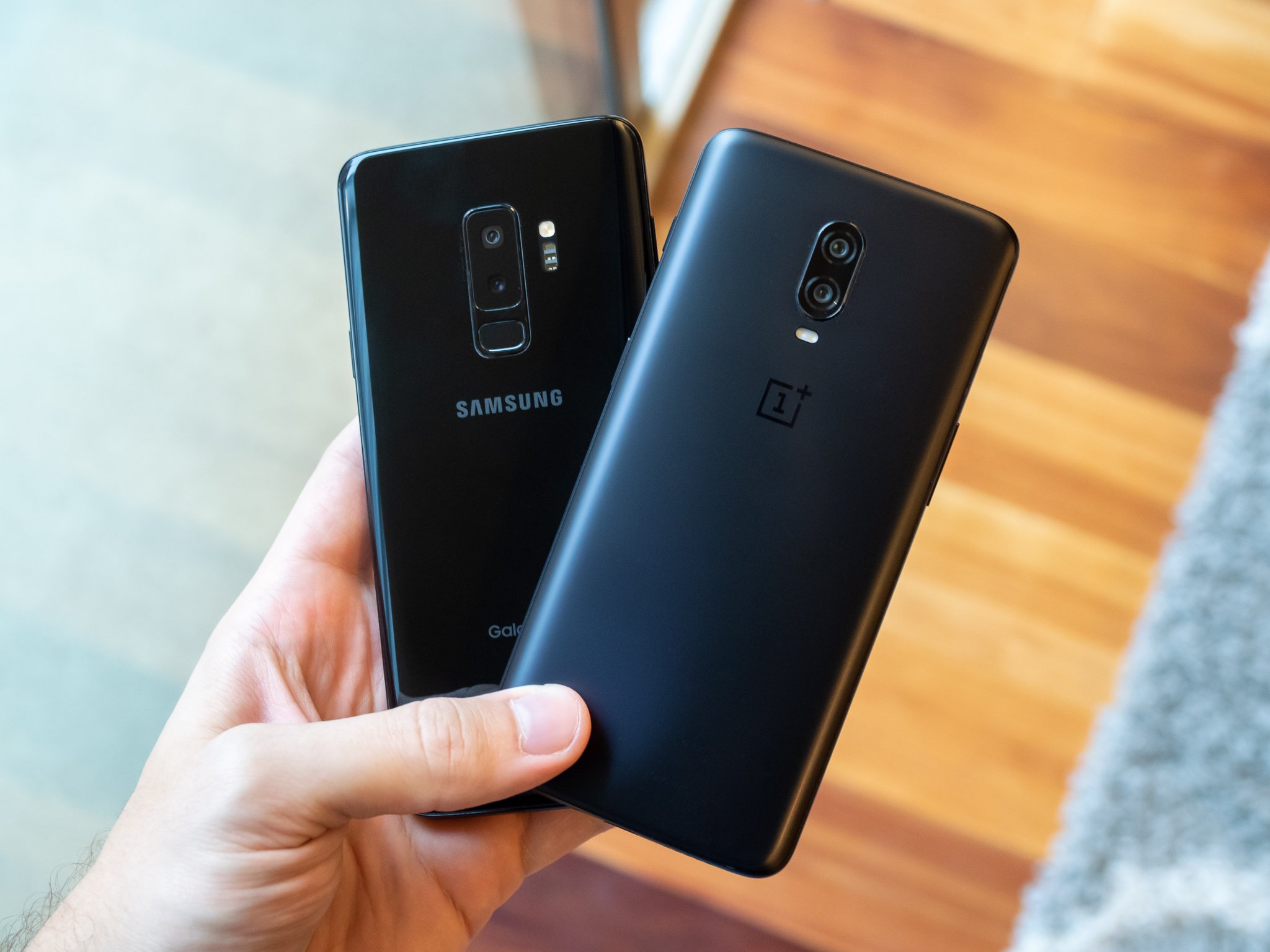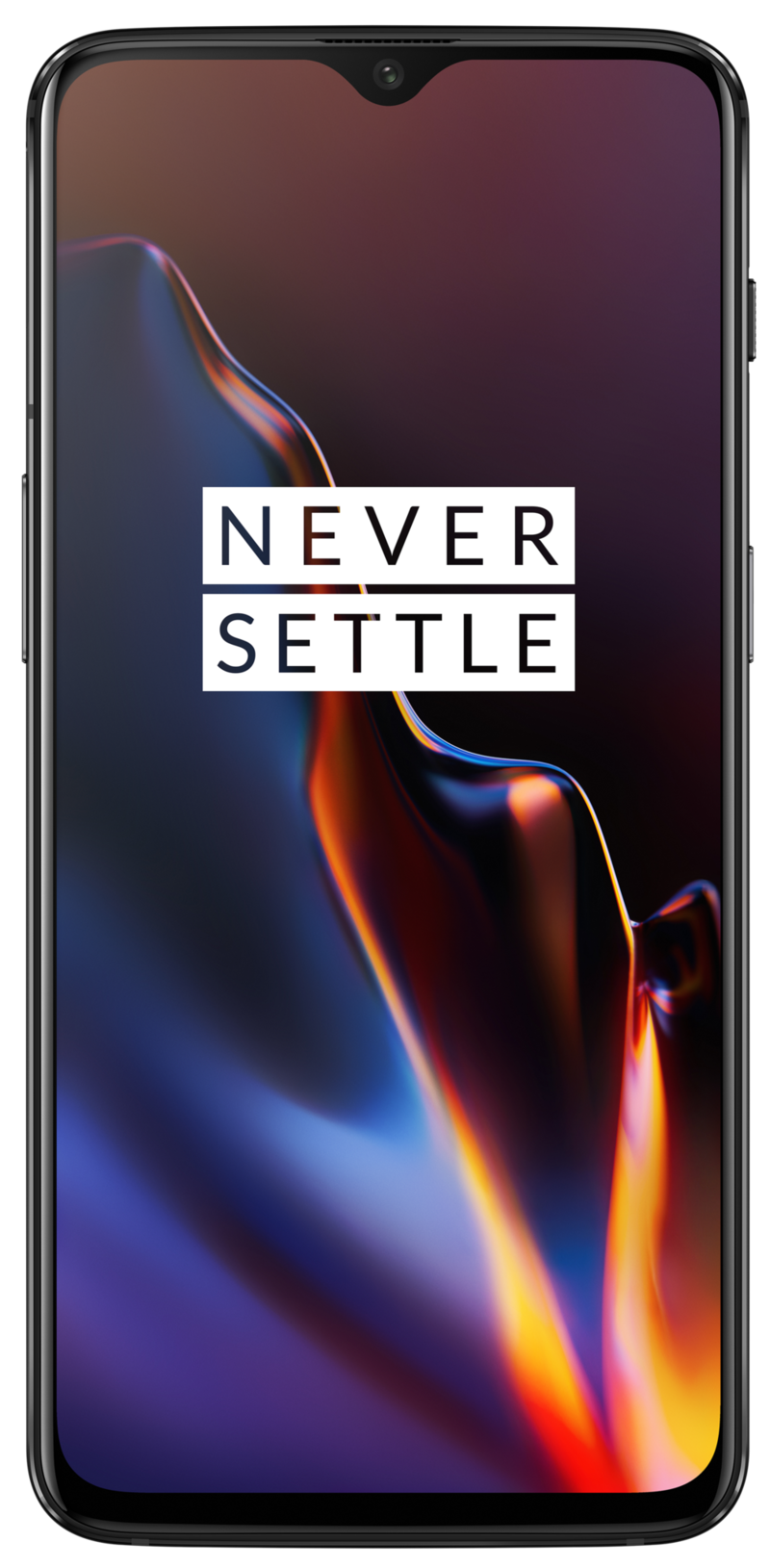OnePlus 6T vs. Samsung Galaxy S9+: Which should you buy?

OnePlus 6T

OnePlus makes a convincing flagship competitor at a fraction of the price. Its hardware, specs, and capabilities match the competition — plus its software is fast, clean, and up to date. You just give up a few of the extra features in order to save some money.
OnePlus 6T
Great value
Samsung Galaxy S9+

The Galaxy S9+ is a better phone, with more features and "nice to have" additions — but then again, at its higher price, it should be. It's better in every way, except for its software and experience. Whether that balances out to be worth about $150 more is up to your wallet.
Samsung Galaxy S9+
A little extra
The Galaxy S9+ is several months old now, so it's dropped in price to a point where the new OnePlus 6T, a budget-minded flagship, is in a similar price bracket. Here's what you need to consider when choosing between the two.
Should you buy a OnePlus 6T or Samsung Galaxy S9+?
OnePlus rode a rising tide of hardware quality to the point where its OnePlus 6T is effectively on the same level of hardware materials and quality as the well-known Samsung Galaxy S9+. There are subtle differences in the finishes and styling, but both of these phones are made of the same high-grade metal and glass put together with tight tolerances to create a solid feel. They're nearly identical in their dimensions as well — the only real difference is the Galaxy S9+'s curved screen edges.
A rising tide of hardware quality has lifted the OnePlus 6T right up to the Galaxy S9+.
The top-level spec sheets are very similar as well. Screen size, processor, memory, battery size, connectivity options, and more are basically the same. The OnePlus 6T has a leg up with more base storage, 128GB, and optionally higher RAM, 8GB, but you can get the same storage options on the Galaxy S9+ as well.
| Category | OnePlus 6T | Galaxy S9+ |
|---|---|---|
| Operating system | Android 9 Pie | Android 8.1 Oreo |
| Display | 6.41-inch AMOLED 2340x1080 (19.5:9) Gorilla Glass 6 | 6.2-inch AMOLED 2960x1440 (18.5:9) Gorilla Glass 5 |
| Processor | Snapdragon 845 | Snapdragon 845 |
| RAM | 6/8GB | 6GB |
| Storage | 128/256GB | 64/128/256GB |
| Expandable | No | MicroSD card |
| Rear camera 1 | 16MP, 1.22-micron, f/1.7, OIS | 12MP, 1.4-micron, f/1.5 - f/2.4, OIS |
| Rear camera 2 | 20MP, f/1.7 | 12MP, f/2.4, OIS |
| Front camera | 16MP, f/2.0 Fixed focus | 8MP, f/1.7 Auto focus |
| Connectivity | Wi-Fi 802.11ac 2x2 MIMO, Bluetooth 5.0 LE, NFC, GPS | Wi-Fi 802.11ac 2x2 MIMO, Bluetooth 5.0 LE, NFC, GPS |
| Audio | USB-C Single speaker | 3.5mm headphone jack Stereo speakers |
| Battery | 3700mAh Non-removable | 3500mAh Non-removable |
| Charging | USB-C 20W Fast Charge | USB-C Quick Charge 2.0 Qi wireless |
| Water resistance | No rating | IP67 |
| Security | In-display fingerprint sensor | Fingerprint sensor Iris scanner |
| Dimensions | 157.5 x 74.8 x 8.2 mm 185 g | 158.1 x 73.8 x 8.5 mm 189 g |
| Colors | Mirror Black, Midnight Black | Midnight Black, Lilac Purple, Coral Blue, Slate Grey |
Where the Galaxy S9+ starts to pull ahead is in the finer points; the hardware "extras" you don't notice at first. The Galaxy S9+ has an IP68 water resistance rating, whereas the OnePlus 6T doesn't have any IP certification. The GS9+ does this even though it has stereo speakers, a headphone jack, and a microSD card slot — the OnePlus 6T doesn't. The GS9+'s glass back hides wireless charging, as well as dramatically better haptic feedback and vibration.
The Galaxy S9+ has a slightly smaller screen area, but the panel itself is of a higher quality — even a Samsung screen from earlier in 2018 is one of the best available in the industry. The AMOLED screen is higher resolution, has bolder colors, and importantly, much higher peak brightness than what OnePlus ships. The resolution and colors aren't the biggest differentiators, but the high brightness for outdoor visibility is really nice to have in direct sunlight.
Get the latest news from Android Central, your trusted companion in the world of Android





OnePlus wins in the software and performance department, and isn't far behind elsewhere.
Comparing cameras follows the same path. The OnePlus 6T takes great photos and is incredibly consistent, but it's missing out on a couple of features and some of the fine tuning found on the Galaxy S9+. The GS9+ has a much better front-facing camera with auto focus, and its secondary rear camera has OIS for clearer zoom shots. The main camera takes photos that are just a bit more vibrant and have sharper textures and edges — all little changes that add up to a better camera experience.
Where the OnePlus 6T shows its strength is in its software, performance, and simplicity. Right from the start, it's running Android 9 Pie, which is newer than the Galaxy S9+ — and going forward, it will continue to be updated faster, more frequently, and for longer than Samsung's flagship. The OnePlus 6T's software is also amazingly quick and consistent, without the bloatware or unnecessary cruft found in so many parts of Samsung's system. It's simple, easy to understand, extremely customizable, and filled with nice-to-have features without all of the unnecessary parts you feel compelled to get rid of.
It's a game of tight margins: the Galaxy S9+ is marginally better, and the price reflects that.
That slick software also leads to longer battery life. The OnePlus 6T's battery is only 200mAh larger, but its longevity is more akin to the Galaxy Note 9 than the Galaxy S9+. Its 20W Fast Charge capability refills the battery quicker than Samsung's tech, too, so long as you use its proprietary chargers.
The Galaxy S9+ is a better overall phone, but it should have the advantage because it's more expensive. There's just more room for the "extras" that add to the phone experience. Since its debut earlier in the year, the GS9+ has received price cuts that put it more in the realm of the OnePlus 6T. You can get a Galaxy S9+ for about $700, which isn't far removed from the OnePlus 6T's $550 starting price — or more likely, your upgraded RAM model at $580. In this game of tight margins, you may be willing to pay the extra money for better features and capabilities — but if you aren't, know you're getting nearly the same phone, minus just a few marginal improvements, with the OnePlus 6T. It's a great phone for the money.

A flagship experience missing a few extras
You pay less for a OnePlus 6T than the competition, and you get less of a phone — but the margins are so tight, the parts where it's "worse" aren't all that big of a deal. It cuts corners in strategic places, and keeps the core experience solid. Plus, it has excellent software that is worthy of any price.

A proper flagship that does it all
Samsung charges more for the Galaxy S9+ because it's a downright better phone with more features and capabilities. If you want to do everything, you get the Galaxy S9+. But if you don't need all of the bells and whistles, you may not be willing to pay $150 more to get the well-known brand name.

Andrew was an Executive Editor, U.S. at Android Central between 2012 and 2020.
